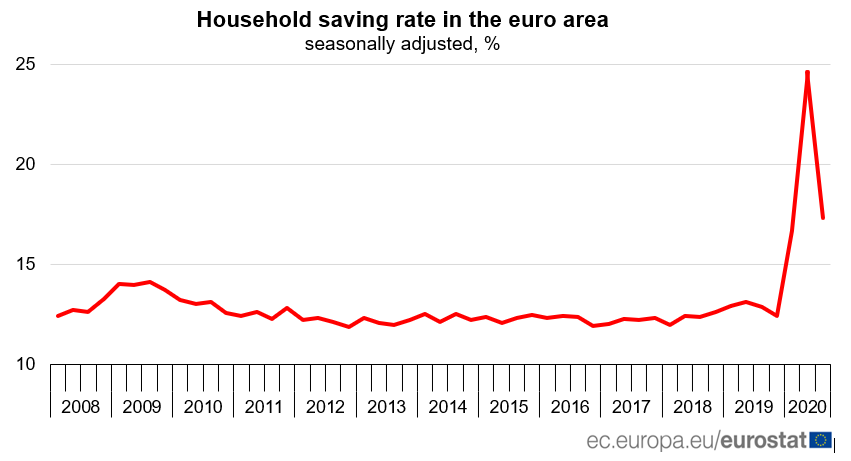On Tuesday morning, the EU statistics agency, Eurostat, released their quarterly sectoral accounts statistics for the third quarter of 2020.
These show how European’s spending habits have changed.
Household saving rates decreased to 17.3 per cent, down from 24.6 per cent in the second quarter. Despite the sharp decrease, this is still the second-highest value since data for this area was first compiled.

Household saving rates are calculated from the proportion of a households’ gross income that is saved.
According to Eurostat, the decrease in household saving rates can be explained by a sharp recovery in consumption (13.9 per cent), which rose at a much higher rate than the recovery of gross domestic income (3.9 per cent), meaning that money spent on consumption was recovering faster than income, and therefore taking up more of a share of income, and reducing the proportion that could be saved.
The household investment rate in the euro area increased in the third quarter of 2020, reaching 8.8 per cent, from 7.9 per cent the quarter before.
Business profit share also increased. Eurostat suggests that this is because business gross value added (14.5 per cent) rebounded at a faster rate than compensation of employees and taxes (13.4 per cent). Profit share in non-financial corporations increased from 39 per cent to 39.6 per cent.
These statistics do much to dispel ideas of economic calamity wrought by the COVID pandemic. They suggest that some limited economic recovery occurred in the third quarter of 2020 and that the economic outlook is not unprecedentedly dire. Importantly, they suggest that consumer spending has continued and that businesses are continuing to invest.
db Group reports turnover of almost €100 million and record profit as it opens bond issue to public investors
This coincides with the launch of a €60 million bond programme to support the Group’s continued expansion
Celebrating success: stories from the team behind Finco Trust
The stories of Lee-Anne Abela, Kris Vella, and Maria Mamo reflect the values that continue to guide the firm forward
Malta’s public debt ‘very much in line’ with Eurozone rules – BOV Chair
The chairperson of Malta’s largest bank shrugged off the doubling in Maltese Government debt since 2019






